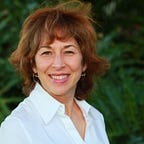Do You Know What Your Blind Spots Are?
Before entering the field of professional coaching, I was searching for the next step in my professional career. I scheduled conversations with friends and colleagues to discuss my interests, while soliciting suggestions. Thankfully, a friend recommended I read the book Presence, by Peter Sengue of M.I.T. I read the book, and upon finishing confidently declared: “this is what I want to do with leaders and organizations.” Fast forward fourteen years later, and that is exactly what I am doing!
Many of the principles from that book were generated with colleague Otto Sharmer. The organizing principle is around Theory U, a book Scharmer published over ten years ago. According to Leading Blog, his new book, The Essentials of Theory U asks: “How do we learn from the future as it emerges?” making the ideas first presented even more accessible.
Leadership Blind Spots
What I love about Theory U is how congruent it is with the foundations of coaching. Both begin with the assumption that we all have blind spots. The coaches’ role is to help clients become aware of their own blind spots, without which they are likely to limit their capacity to envision new action. Anais Nin said “We see the world not as it is, but as we are.” Therefore, the actions we produce are a direct result of how we see things. Scharmer says, “I pay attention this way, therefore it emerges that way.”
According to Leading Blog, “we begin to understand Theory U with the blind spot. Too often we don’t factor in our interior condition. That’s because it’s often difficult to become aware of our own blind spots. “We can see what we do (results). We can see how we do it (process). But we usually are not aware of the who: the inner place or source from which we operate.” That is our blind spot: the place from which our attention and our intentions originate — our source.
The question for leaders is “How does our blind spot show up in our leadership?”
What I give attention to, what I notice, what I act on, is a function of my interior condition. This of course, affects how and what we learn and thus what we can apply to any given situation.
Scharmer suggests that in order to create and innovate today, we learn from the future as it emerges. He calls this presencing.”
How do we do this? One way is to look at the present as an extension of the past. The second is by creating a distinctive quality to the present moment, so we can experience what is wanting to emerge by sensing, feeling. In other words, our times requires us to disrupt past patterns. Therefore, we need to become present.”
How can we begin to presence as individuals, organizations, and as a society?
Leaders need to become self-aware of their own blind spots, through processes such as executive coaching, as well as through assessments, workshops, leadership circles, etc. In addition, leaders need to learn the experience of being present, through techniques and tools that create lived experience of being present to themselves and others.
Scharmer says: “The quality of results achieved by any system is a function of the quality of awareness that people in these systems operate from. In three words: “Form follows consciousness.”
I am honored to support leaders and teams in developing presence so they can imagine and create the future they desire. For more information visit our website.
________________________________________________________________
If you enjoyed this article, I have others on my blog at susansfreeman.com.
Susan Freeman is an Executive Success Strategist, Leadership Coach, Speaker, Founder and Author of “Step Up Now: 21 Powerful Principles for People Who Influence Others”. She writes on the topic of leadership and influence using her unique innovative system that blends Western strategy and Eastern wisdom to activate the Guru Leader Within.
